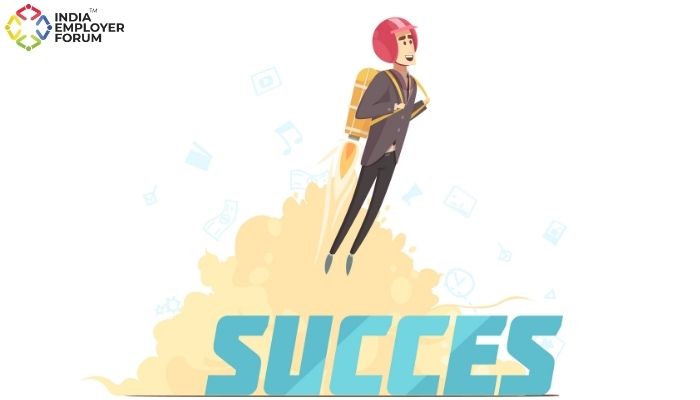Many businesses have changed drastically in the last couple of years, making it imperative to upskill their staff. Technology is changing at an amazing pace and is impacting business operations. The IT industry has new software, hardware and platforms coming up every day thanks to artificial intelligence, automation and machine learning. The goal to improve the experience of the customer and employees experience and the requirement to improve the way services are offered requires constant and successful upskilling.
For this it is vital to identify the different skill gaps, priorities of upskilling and essential upskilling capabilities. While many companies are working towards upskilling capabilities, there is still plenty of room for improvement. Never before has it been so important for employees to continuously upgrade skills to keep up with the dynamic environment and ensure their relevance in the job market. Upskilling not only helps individuals to remain competitive in the job scenario, but it also enables organizations to stay ahead of the competition by being up to date with the latest technology.
There are many reasons why successful upskilling of individuals is critical in 2023:
- With the deluge of digitisation, all sectors of business are looking towards technology to improve efficiency, operations and growth. Upskilling professionals enables them to understand and use this digital transformation and lead the way for innovative solutions that are a must for businesses to succeed in this digital age.
- The skills and requirements for a job are changing rapidly due to technology and upskilling professionals enable them to arm themselves with the necessary skills to meet the changing job requirements of the future.
- Upskilling professionals can help organisations improve their efficiency and productivity by using the latest technology and automation tools. Employees can work faster and more effectively leading to a better outcome for the organisations.
- The skills gap to support modern IT requirements is a growing concern for many organizations as it is becoming more and more difficult to find IT professionals with the necessary skills required to support modern IT. Upskilling and reskilling close the skills gap and allow organisations to successfully use the latest technology and automation effectively.
- Enabling employees and teams to innovate and stay ahead of the competition creates new revenue streams. This will enable them to streamline operations and develop new products and services.
Upskilling needs to be an ongoing process and has to be continually updated and made attractive if you want to stay ahead as technology, demographics of teams and working models are continuously changing. Upskilling is the equal responsibility of both the management team and the employee and here are seven important steps to improve upskilling.
- It is vital to prepare a strategic upskilling plan after aligning, assessing, mapping existing skills and understanding the skills gaps. The organisation has to see whether the current skills of its employees meet its long-term goals. If it doesn’t, they have to perform a skills gap analysis and determine the best way to fill the gaps. The 5 most important skill domains to consider when creating an upskilling plan are process, human, technical, automation and leadership skills.
- Once that is done, it’s equally important to keep updating the learning and upskilling programs. Many employees are not happy with their company’s upskilling program and feel that it is not a top priority for their employers and a number feel that a lack of content or depth was a barrier to upskilling. It is very important to find out what improvements are required to meet the upskilling needs of the employees.
- Continuous learning and upskilling should be the key priority for everyone at all levels. Continuous learning should be part and parcel of an individual’s job. Many feel that paucity of time and budget constraints is a deterrent and challenge to upskilling. On-the-job work experience is a great way to provide learning opportunities to employees — asking an employee to lead a project is a great way to enhance their leadership skills if it is presented and perceived as a great opportunity to develop them.
- Continuous feedback by leaders is a very powerful learning experience. The management should as a rule identify, monitor and provide feedback on the development opportunities associated with a particular assignment or activity. Feedback has to be a continuous process and not just during the annual performance review.
- Training of skills has to be part of the job and learning should be a result of doing. Acknowledging a need for training can reveal performance issues due to which people might avoid training even if it is helpful. The best option is to make skills training the default through peer learning, buddying, shadowing, pair programming and job rotation.
- Let your employees know clearly that upskilling is connected to career progression. Though many professionals may be satisfied with the way things are, the rest would like to see changes in their personal and financial life. Moving up in their role and a higher salary acts as an incentive for employees to upskill.
- Make sure your leaders lead by example. It is vital that managers act as role models and do their best to motivate their team members to take advantage of upskilling opportunities. If there are budget constraints, mentoring or coaching are good alternatives to a successful way of learning.
Successful upskilling is essential for businesses if they don’t want to lose their competitive edge in the digital age. Continuously upskilling helps organizations meet changing job requirements, enable innovation, adapt to digital transformation, improve productivity and efficiency and reduce skills gaps. Ultimately, upskilling works both for individuals and organizations, helping them to succeed in the dynamic technological era. But successful upskilling goes much beyond technical skills and individuals need to combine their own upskilling development plan with the team’s requirements or gaps. Upskilling improves retention of employees, enables employee growth in both professional and personal development and helps an organization to successfully achieve its goals.
References:
- Seven Steps to Successful Upskilling in 2023 | DevOps Institute | 2023
- 7 Steps to Upskilling Your Workforce | Link | October 2020
You might also be interested to read: 10 Top Missions for Skill Development and Employment by Government




